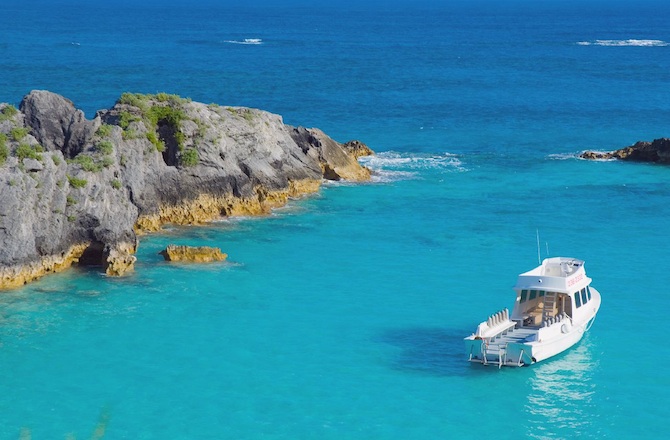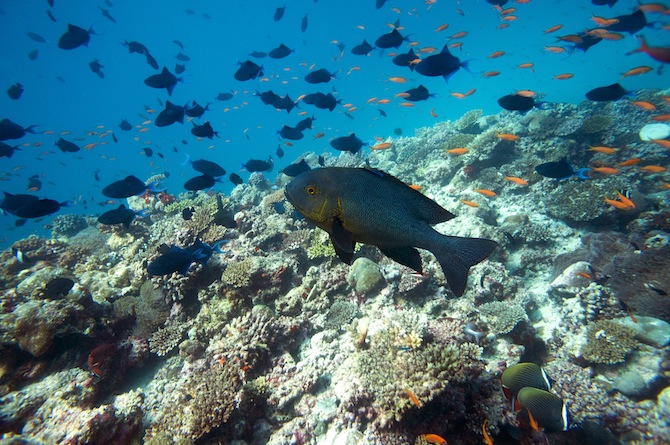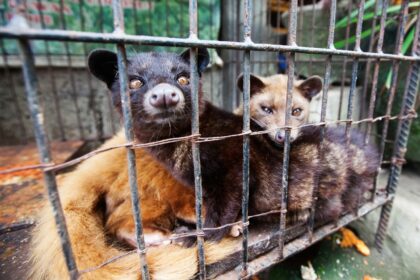
Like fellow carriers, JetBlue’s flight map has routes to and from the Caribbean. Yet recently the consumer airline took off on a different path that’s the first of its kind: toward protecting the health of this region’s beaches and oceans.
In December 2013, the airline partnered with The Ocean Foundation, a nonprofit ocean conservation, to execute a long-term plan that combines sustainability with business sense. The plan ties in promoting the importance of Caribbean beaches and waters staying clean to the terms of its relation to the airline’s base measurement – revenue per available seat mile (RASM).
Simply put, it calculates how much in consumer spending results from public interest in this destination’s environment.
“The idea [behind it] is that it takes the whole ecosystem to work together to provide the three things that travelers are willing to get on a plane for: sun, sea and sand,” explained Sophia Mendelsohn, JetBlue’s head of sustainability. “Our profit is dependent on the health of these ecosystems.”
At the Clinton Global Initiative’s winter meeting in Latin America last year, Mendelsohn met Mark J. Spalding, the foundation’s president. As they were talking about the natural beauty of the Caribbean region, such as its crystal blue waters, the subject of JetBlue’s flights came up.

“We followed up right away with the idea of we ‘protect the blue,’ and they ‘fly people to the blue’,” said Spalding. “Because our mutual interest was in clean beaches, and clear turquoise water in the Caribbean, we looked for a way to work together.”
“So, we are seeking to prove that beaches free of debris, and healthy coral reefs and mangroves have a real business value,” Spalding added.
Currently, nearly a third of JetBlue’s flights go to the Caribbean.
For the project, JetBlue has been sharing its revenue data with A.T. Kearney, a global marketing consulting firm, to analyze and match up where the Caribbean’s healthy eco systems are in terms of its key flight areas. In using this data to create a valuation template, Mendelsohn explained that the analysis is “not about changing flight patterns, but [rather] proving existing flight routes already exist and our profitable because of [the state of health of] the ecosystems.”
The next stage of this project hopes to show elected officials and community and business leaders in the Caribbean how this data can help with sustainability/ecotourism efforts as well as with revenue.
Mendelsohn summed up the plan best. “Mostly the idea comes from truly trying to answer the question, if we all know a beautiful Caribbean is good for business, then why are businesses not more involved in conservation?”
Also Check Out:
Tracing The Heritage Of The Delicious Bakarkhani From The Mughal Era To Present Day South Asia
Get Inspired By Wanderlust-Inducing Travel Photography
Latest posts by Michele Herrmann (see all)
- 15 Unique Gifts That Give Back To Charity - Jan 21, 2024
- Foodie Fun: 12 Delicious Made In America Gift Ideas - Nov 17, 2019
- How Deidre Mathis Made Her Dream Of Starting A Hostel Business A Reality - Jan 31, 2019
- Where To See NYC’s Best Street Dancing (While Giving Back) - Oct 4, 2017
- 6 Creative & Curative Tea Shops In Portland, Oregon - Aug 28, 2017



